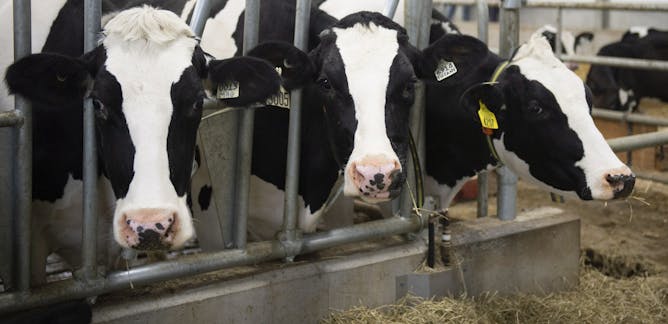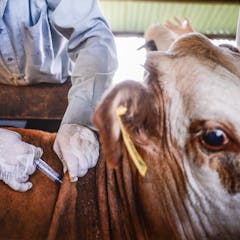
Articles on Cattle
Displaying 1 - 20 of 57 articles

Bird flu in U.S. dairy cows has Canadian public health experts on high alert. With one human case identified in Texas, what is the likelihood of H5N1 influenza moving from birds to mammals to people?

For now there’s no spread of H5N1 between humans, which is good news. But bird flu is evolving, and we need to stay vigilant.

Cattle are major producers of methane, a potent greenhouse gas. But there are methods that can reduce their climate impact – if ranchers have incentive to use them.

A disfiguring disease of cattle and buffalo has arrived on our doorstep. We need to keep lumpy skin disease out of Australia, while preparing for the almost inevitable outbreak.

The state’s largest wildfire on record tore across the heart of Texas cattle country, and more days of strong winds were forecast. A rangeland ecologist explains why the flames spread so fast.

Vaccinating livestock against common disease not only improves animal welfare, it’s good for the planet too.

Food systems are increasingly disrupted by climate disasters, while also being a major contributor to climate change. World leaders at COP28 vowed to do something about it.

A recent evidence review found children who ate full-fat dairy were healthier and leaner.

Everyone loves a barbecue – here’s how to enjoy it while being mindful of our planet.

If greenhouse gas emissions continue at a high rate, breadbaskets of Europe and North America will see a 50% chance of a flash drought each year by the end of this century.

Preventing theft on farms is much more difficult than in urban areas for many reasons – but new technological developments may help curb the crimes.

The EU have introduced a new regulation on the import of products linked to deforestation – but will this reduce deforestation globally?

Tangible solutions would reduce livestock methane emissions, while also improving productivity and livelihoods.

Foot-and-mouth disease rarely kills animals, but it leads to production losses and economic knocks.

Improving the diets of livestock in Africa provides a rapid pathway to increasing nutrition for people.

Feeding insects instead of grain to animals is an inexpensive, sustainable way to increase the world food supply. An animal scientist explains what’s involved in developing insect feed for cattle.

The answer lies in silvopastoralism, an agricultural method that attempts to mimic natural forest ecosystems with livestock added into the mix.

Land grabs spearheaded by wealthy interests are accelerating deforestation, and Brazil’s National Congress is working to legitimize them.

A simplistic ‘all livestock are bad’ narrative is promoted by campaigners, celebrities, philanthropists and policymakers alike. A much more sophisticated debate is needed.

African livestock keepers need help: without proactive interventions, increasing temperatures will reduce meat and milk production.

